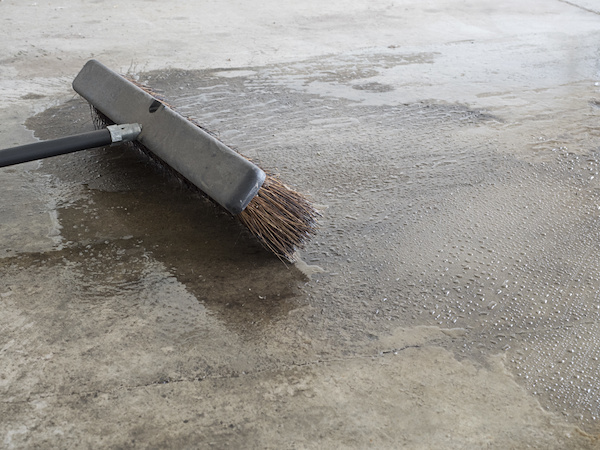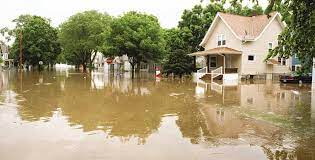Table of Contents
How to Fix Water Leak in the Garage
Water leaking in the garage is a common issue that many homeowners face, and while it may seem like a minor inconvenience, it can quickly escalate into a bigger problem if left unchecked. From damaging stored belongings to weakening your garage’s foundation, even a small water leak can lead to costly repairs down the road. Understanding what causes these leaks is the first step to preventing them, and knowing the best ways to fix them can save you from future headaches.
In this post, we’ll cover the most common reasons for water intrusion in your garage and provide expert solutions to keep your space dry and protected.
Causes of Water Leak in the Garage
Water leaks in the garage can stem from a variety of sources. Identifying the root cause is crucial for preventing further damage and ensuring proper repairs.
Here are some of the most common causes of water leaking into the garage:
1. Improper Drainage Around the Garage
If the landscape around your garage is sloped toward the structure, rainwater and runoff will naturally flow toward it. Poorly graded soil or inadequate drainage systems can allow water to pool around the foundation, increasing the likelihood of leaks.
2. Cracks in the Foundation or Floor
Over time, foundations can develop cracks due to settling, soil shifts, or even poor initial construction. These cracks serve as entry points for water, especially during heavy rainfall or snow melt. Even small cracks can let water seep in and cause long-term damage.
3. Damaged or Missing Weatherstripping
Weatherstripping around the garage door is designed to keep water out. However, it can deteriorate over time due to exposure to the elements, becoming brittle or loose. Damaged or missing weatherstripping allows rainwater to enter, especially when it’s windy or stormy.
4. Clogged or Broken Gutters and Downspouts
Gutters and downspouts play a critical role in directing water away from your home’s foundation. When they become clogged with debris or broken, water overflows, pooling near the garage and eventually seeping inside.
5. Leaking Roof or Flashing
A damaged roof or faulty flashing around vents, chimneys, or other structures near the garage can allow water to penetrate the building. Water can travel from the roof down into the walls or foundation, making it difficult to pinpoint the source.
6. Poorly Sealed Garage Door or Windows
Garage doors and windows that aren’t properly sealed can allow water to enter during heavy rains. Gaps around the edges or old, deteriorating seals can create openings where water easily finds its way inside.
Best Way to Fix Water Leaking in the Garage
When water starts leaking into your garage, quick action is crucial to prevent long-term damage to both the structure and your belongings. The best way to fix the issue will depend on the cause of the leak. Here are some effective solutions based on common causes of water intrusion:
1. Improve Drainage Around the Garage
If water is pooling around the foundation due to improper grading or drainage, take these steps:
Re-grade the soil around your garage so that it slopes away from the structure, ensuring water flows away from the foundation.
Install French drains or trench drains to channel water away from the foundation, especially in areas with heavy runoff or frequent rain.
Ensure that gutters and downspouts are functioning properly, and extend the downspouts several feet away from the garage to direct water further from the building.
2. Seal Cracks in the Foundation or Floor
Cracks in the foundation or floor can be a direct entry point for water. Fixing these cracks is essential:
Clean the cracks thoroughly, removing debris and moisture.
Apply a high-quality epoxy or polyurethane concrete filler to seal the cracks, ensuring a watertight bond.
If the damage is more extensive, you may need to hire a professional to inject pressurized sealant into deeper or larger cracks to fully block water infiltration.
3. Replace or Install New Weatherstripping
Worn or damaged weatherstripping around the garage door can allow water to seep in during storms:
Inspect the weatherstripping regularly for signs of wear, brittleness, or gaps.
Replace damaged weatherstripping with a durable, water-resistant material that creates a tight seal around the garage door.
Consider adding a garage door threshold seal for additional protection, which can block water that might otherwise slip under the door.
4. Repair or Replace Gutters and Downspouts
If clogged or damaged gutters are causing water to overflow and pool near your garage:
Clear any debris from the gutters and downspouts to ensure water flows freely.
Repair or replace any damaged sections of the gutter system, making sure there are no leaks or gaps.
Add gutter extensions or splash blocks to ensure that water is directed at least 5–10 feet away from the garage.
5. Fix Roof Leaks and Flashing
If water is entering your garage from above due to a damaged roof or faulty flashing:
Inspect the roof for missing, damaged, or curled shingles and replace them as needed.
Repair or replace any damaged flashing around chimneys, vents, or other roof structures, ensuring a watertight seal.
If the roof is old or severely damaged, consider replacing the roof to prevent further leaks.
6. Seal Garage Windows and Doors
Water can seep through gaps around windows and doors if they aren’t properly sealed:
Use exterior-grade caulk to seal any gaps or cracks around the windows and door frames.
For larger gaps, consider installing weather-resistant foam insulation or rubber seals around the edges of the windows and doors.
If the windows or doors are outdated or damaged, replace them with newer, weather-resistant models to ensure a better seal.
7. Install a Sump Pump (If Necessary)
In garages that are prone to flooding or heavy water accumulation, especially in low-lying areas:
Consider installing a sump pump to remove water as it enters the garage. A sump pump automatically channels excess water out and away from the structure.
Ensure that the sump pump is installed in a low point of the garage where water tends to collect.
8. Waterproof the Garage Floor
If you’re dealing with persistent moisture, consider applying a waterproofing sealant to the garage floor. This will create a barrier that prevents water from seeping in through porous concrete.
By addressing the underlying cause of the water leak and choosing the appropriate solution, you can effectively fix leaks in your garage and protect your property from further water damage. If the issue is complex or persistent, it’s always a good idea to consult a professional restoration expert to ensure the job is done right.
For Water Damage Remediation – Call (877) 750-7876
After Identifying if Water Damage Is New or Old, and you need water damage remediation, call PuroClean Emergency Recovery Service New Jersey to perform all water damage services.
If your New Jersey home experiences water damage, contact us as soon as possible. Swift action is essential to minimizing damage and getting your business back on track. Reach out to PuroClean Emergency Recovery Service New Jersey at (877) 750-7876 to benefit from our expertise and restore your property after water damage.




 PuroClean Emergency Fire, Water and Mold Damage Restoration New Jersey
PuroClean Emergency Fire, Water and Mold Damage Restoration New Jersey